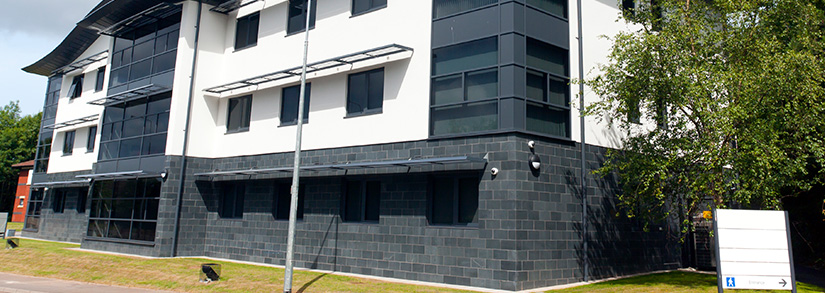
- The precise measurement of social factors and impact for investors is still in its early stages, but for some real estate sectors like affordable housing, education and health care, more obvious links to social themes exist.
- Institutional investment in property types linked to social themes increased significantly over the past 15 years, but remains somewhat niche, making up only 4% of portfolio exposure and 8% of transaction activity.
- In aggregate, across the MSCI Global Annual Property Index, socially linked property types have outperformed by more than 100 basis points per year in the 10 years to December 2020, though returns varied across segments.
Institutional real estate portfolios have gradually become more diversified across property types over the last 20 years. Portfolios once dominated by retail and offices have, for example, increased exposure to logistics at the expense of retail, spurred in part by e-commerce. More recently, niche or alternative property types like senior living, data centers and self-storage have grown in popularity with investors. Historically, allocations to such property types have been driven by traditional investment motivations: e.g., diversification, longer leases, a search for yield or growth potential.
As investors have begun to embed ESG principles into their investment processes, and impact investing has gained popularity, interest has increased in property types linked to social themes. While “social impact,” both positive and negative, is notoriously difficult to consistently quantify, emerging frameworks like the UN Principles for Responsible Investing’s “Impact Investing Market Map” have begun to lay the groundwork. That document highlights that impact investments could be associated with social themes, three of which have real estate investment and management angles: affordable housing (including student housing), education and health care.
Social Segment Has Grown Rapidly
Investment in “social properties” has increased significantly over the last 10 years, as shown in the exhibit below.1 The aggregate exposure of portfolios contributing to the MSCI Global Annual Property Index increased from less than 1% in 2007 to 4% in 2020, while transaction volume of these property types across the broader market (as measured by Real Capital Analytics, or RCA) has grown even faster, increasing from 2% in 2007 to 8% in 2020 of total investment activity.2 The majority of exposure and investment activity has been linked to health-care assets, but student housing also accounts for a significant portion of the total market.
Growth of Real Estate Investments Linked to Social Themes
Social Properties Outperformed the Wider Market
MSCI measures the financial performance of approximately 5,000 properties linked to social themes, with an aggregated capital value of USD 80 billion, as of December 2020, within the MSCI Global Annual Property Index. The U.K. accounted for roughly a third of this value, while France, Sweden and the U.S. each accounted for between 10% and 20%.
Social properties outperformed the MSCI Global Annual Property Index on a total-return basis over the past five years in addition to any nonfinancial social impact they may have generated (see the exhibit below). At a global level, these properties outperformed by more than 100 basis points (8.8% vs. 7.6%) over the past 10 years. The U.K. outperformance can be explained by stronger yield compression and higher income growth over the past five years. Globally, the capitalization rate for transactions also declined, from approximately 7.5% in 2011 to 5.2% in 2021, according to RCA data.
Social Properties’ Returns Versus the Broad Market
Returns Varied by Property Type and Investment Strategy
Social properties can be divided into several segments. In the U.K., the main social-property types outperformed the wider-market index over the past five years, although social properties sometimes lagged in earlier years (exhibit below, left panel). Returns were also less volatile than the wider market. Beyond the difference in property type, investors could have a different investment strategy such as focusing on long secured income in which a third party is involved in the management and responsible for the operational risk. The right panel of the exhibit below shows the relative performance of long-lease assets versus the wider market. The assets with a remaining lease term of more than 15 years outperformed in the last five years, which was also the case for the wider market.
Total Return by Different Property Type in the UK
Financial Return Is Only the Starting Point
In this analysis, we have broadly defined social properties as those property types that could be expected to generate some positive social impact, drawing on the “Impact Investing Market Map.” We have not attempted to measure social impact itself or propose an impact threshold that would qualify a property as “social.” Indeed, it could be the case that some properties within social-property segments have little to no social impact, while some properties within more traditional property sectors could have significant social impact.
While many industry groups and nongovernmental organizations are beginning to grapple with the issue of measuring impact, more work is needed to bring global standards and transparency to this field. It is clear, however, that financial returns to these social properties have been attractive in recent years. As standards around impact measurement emerge and develop, our ability to attribute financial-performance drivers between social characteristics and impact versus broader market drivers, while measuring exposure to social factors across all property types, will evolve.
1“Social properties” in this analysis are defined by MSCI’s data providers as affordable housing, senior and student housing, health-care facilities (including medical offices) and educational properties, irrespective of whether they are held by diversified portfolios or more specific strategy vehicles.
2RCA’s sample is based on income-producing transactions of apartments — age-restricted, student housing and subsidized — and senior housing and care.
Further Reading
Assessing Company Alignment with UN SDGs
